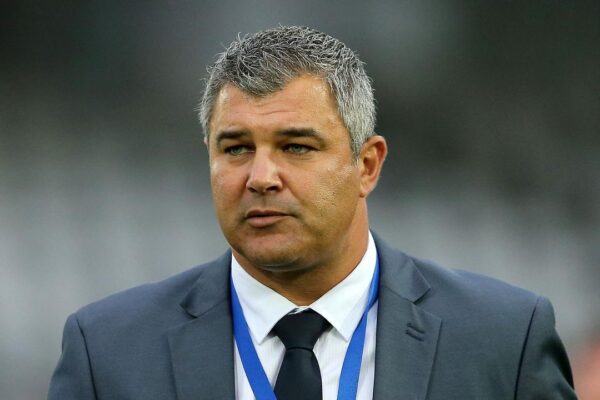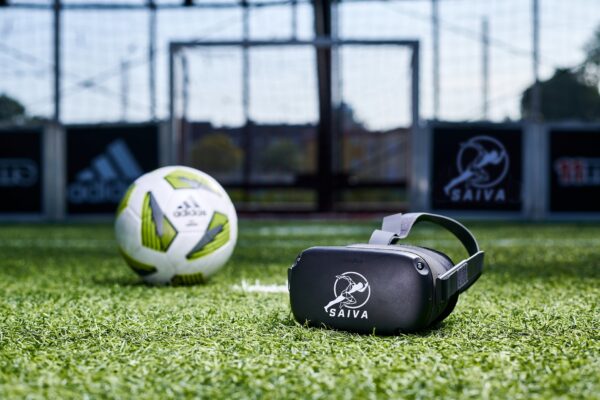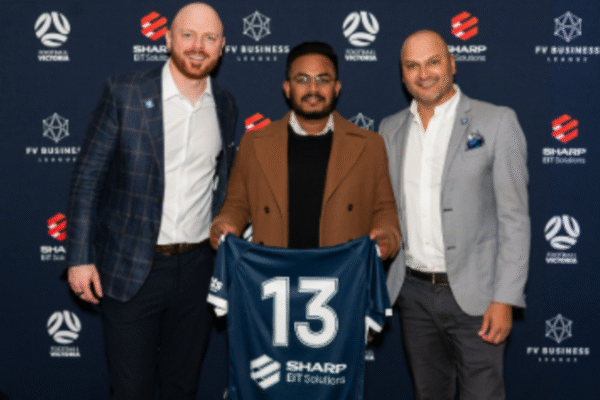
Speaking at Football Victoria’s Community in Business event on Friday, Football Australia CEO James Johnson reflected on his first 14 months in the top job of the sport, detailing the difficulties the organisation faced in 2020 and the opportunities it has in the coming years.
“I’d like to share with you what I walked into in January 2020,” Johnson told the audience in Melbourne.
“I walked into Football Australia and what I understood from the off was that the organisation had really lost a sense of unity. I believe the organisation had lost its connection with the community.”
Johnson criticised the focus of the governing body’s financial model, believing it was not looking after the best interests of the game overall.
“The business model was heavily centred on the A-League,” he said.
“That was what decision making evolved around, while other parts of the game, in my opinion, were neglected. The business model was disconnected, fractured and was inefficient. It was inefficient because of the duplication of administration. It wasn’t set up to foster growth for a thriving football ecosystem.
“The model denied the most significant part of our game, our identity, our community, our people, our stories, our diverse and multicultural base and our great national teams.
“In place of this identity, we’ve allowed a narrative to proliferate over the past 10-15 years that is divided, politicised, old soccer against new football, but this is not what our game is.”

The former Brisbane Strikers player admits that the game is far from perfect in this country and needs to address a range of issues.
“We have some really serious challenges ahead of us,” he said.
“We don’t own enough facilities for our growing base, we have too many players, we are turning children and families away from our code because we don’t have enough infrastructure around the country. This is a real issue.
“The performance gap that we released in 2020 tells us that the age group that plays the most minutes in our elite men’s competition (the A-League) is the age of 32. We are not giving enough opportunities for our players under 23. We also have challenges with our football pyramid, we must reconnect our pyramid so we can unleash this potential of an ecosystem.”
Since Johnson was appointed as CEO early last year, the governing body has shifted their business model allowing them to deliver strategic priorities and focus on initiatives such as: the implementation of the domestic match calendar, the proposed introduction of a domestic transfer system, a half slot to the ACL for the FFA Cup winner and more. Johnson believes factors such as these are vital to reconnecting Australian football’s national pyramid.
In his speech at the Community in Business event, the former senior executive at the AFC, FIFA and the City Football Group also strongly emphasised the importance of recognising the game’s history properly, something the game has continued to neglect in previous years.
“We have a rich history and it must be celebrated,” he said.
“There are moments in our game, that not only shaped the game, but they shaped the way that our country is. In 1974, we sent our first men’s team to the World Cup led by Rale, in 1993 Maradona came here, in 1997 Iran broke our hearts, in 2005 a famous penalty got us to our first World Cup in many decades and in 2020 we won the rights to host the Women’s World Cup.
“Our game is full of these moments and I think if you all think about those moments, people will remember where they were when they occurred. We forget that our clubs in this country predated federation. We forget that football was the first sport in Australia to have a national competition in the 70’s. We forget the first cup competition in this country was in the 60’s, the Australia Cup.
“We forget that women played football in this country as early as 1909. Nearly 42 years ago, our very first Matildas stepped out onto Seymour Shaw Park for the first Matildas match. Now, we are only a few years away from the biggest sporting event for women in the world coming to our shores.
“We forget that 99 years ago our Socceroos played their first match against New Zealand. We are one year away from 100 years.
“We forget the role that football played in the lives of indigenous children, like John Moriarty, Jade North and Kyah Simon.
“We forget that our national competitions have always been the hallmark of our game. The NSL for many, many years. Our history provides us with platforms to move forward to and to launch a bold, exciting future for our sport.”

Johnson sees the Women’s World Cup in 2023 on home soil as the perfect avenue to establish a strong future for the game.
“We are focused on creating that link between our national teams, in particular the Matildas and our community,” he said.
“Our base of 2 million participants is great, but only 22% per cent of our base are women and girls. There is a direct link between the importance and relevance of national teams and the base of community. With our national teams starting up again, you will see over the next 3 years (particularly with the Women’s World Cup) that our base will grow further and it will grow well.
“Our ‘Legacy 23’ framework is an ambitious plan to maximise the opportunities that the legacy of the Women’s World Cup (WWC) will provide us. Legacy is not something that starts after the WWC, it started last month. We’ve got to try as best as possible to ensure the WWC has a long-lasting legacy, similar to what happened with the Sydney Olympics in 2000.”
The FA CEO concluded by calling on every single stakeholder to be open to change, including the governing body itself, and push forward to make the sport the best it can be.
“If we are to reach the potential of our game, each and every one of us, every stakeholder, Football Australia, Member Federations, clubs, leagues, our community need to be open to change,” he said.
“Change and innovation are the commodities that we must deal with in 2021. I’m under no illusions that Football Australia must continue to earn the trust and confidence back from our stakeholders and community. To do this, we need deeds not just words.
“Let’s seize this opportunity and put our best foot forward.”




















